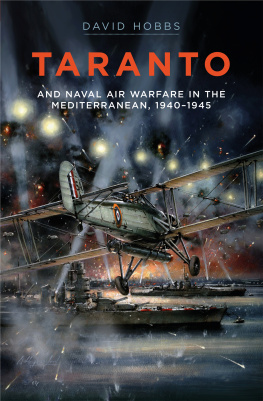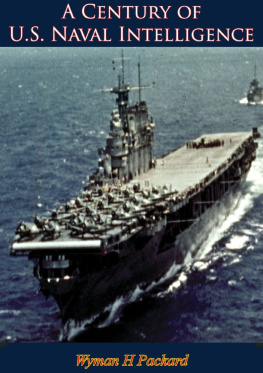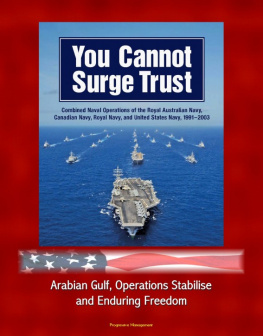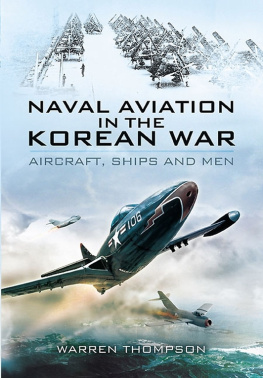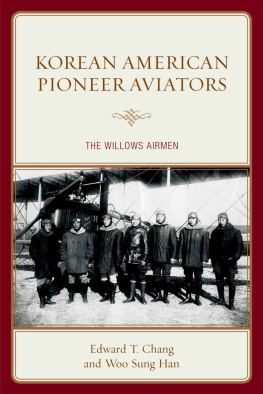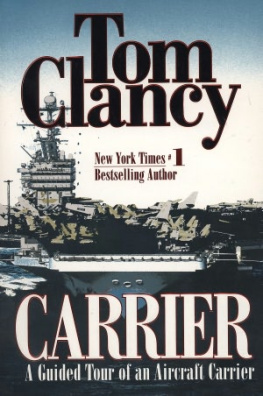
The
U.S. Navy
in the Korean War

The
U.S. Navy
in the Korean War
EDWARD J. MAROLDA, EDITOR
Published in cooperation
with the Naval Historical Center and the Naval Historical Foundation

NAVAL INSTITUTE PRESS
Annapolis, Maryland
The latest edition of this work has been brought to publication with the generous assistance of The United States Naval Academy Class of 1945.
Naval Institute Press
291 Wood Road
Annapolis, MD 21402
2007 by the United States Naval Institute
All rights reserved. No part of this book may be reproduced or utilized in any form or by any means, electronic or mechanical, including photocopying and recording, or by any information storage and retrieval system, without permission in writing from the publisher.
ISBN: 978-1-61251-513-7 (eBook)
The Library of Congress has cataloged the hardcover edition as follows:
The U. S. Navy in the Korean War / Edward J. Marolda, editor.
p. cm.
Includes bibliographical references and index.
1. Korean War, 19501953Naval operations, American. 2. United States. NavyHistoryKorean War, 19501953. I. Marolda, Edward J.
DS920.A2U85 2007
951.9042450973dc22
2006033336

 Print editions meet the requirements of ANSI/NISO z39.48-1992 (Permanence of Paper).
Print editions meet the requirements of ANSI/NISO z39.48-1992 (Permanence of Paper).
14 13 12 11 10 9 8 7 9 8 7 6 5 4 3 2 1
First printing
Contents
.
THE KOREAN WAR was a historic milestone for the U.S. Navy during the long, sometimes hot, Cold War. In the epic struggle from 1950 to 1953, naval forces operated in the Yellow Sea and the Sea of Japan, ashore on the Korean peninsula, and in skies overhead to defeat invading Communist armies. Our Sailors and Marines had to battle not only a determined, skillful, and ruthless foe but also the extreme weather common to northeast Asia. Cold, biting wind and snow characterized the Korean winter and blistering heat, the summer. That our fighting men overcame those challenges and fought successfully to preserve the independence of South Korea and the freedom of the Korean people is a testament to the American spirit. Sailors and Marines, many of whom had served with distinction in World War II, responded once again to the call to arms. Members of the Naval Reserve formed the core of many units deployed to Korea.
The war tested new aircraft, including jet-powered fighter-bombers and medical evacuation helicopters, but also validated the continued worth of warships, amphibious vessels, and planes that had served the nation so well in World War II. In that regard, Iowa-class battleships and 8-inch-gun cruisers provided critical gunfire support to troops ashore; LVTs, LCVPs, and LSTs did yeoman service in the amphibious role; and the gull-winged, piston-powered F4U Corsairs saved many American lives with their precise and devastating close air support.
We are gratified that the U.S. Naval Institute has agreed to this compilation presenting the first-rate research and writing of distinguished authors initially engaged to produce booklets commemorating the Korean War. The work of these scholars analyzes air, amphibious, gunfire support, and logistic operations; decision making by naval leaders; and the contributions of Sailorsyoung and old, black and white, officer and enlistedwho gave their all in the fight for freedom during the early days of the Cold War.
My special thanks go to Dr. Edward J. Marolda, senior historian/ chief of the Naval Historical Centers Histories and Archives Division and a distinguished scholar of the Navys modern history. He oversaw preparation of the Korean War commemorative series under the director of naval history, Rear Adm. Paul E. Tobin, USN (Ret.), and his predecessor, Dr. William S. Dudley. Equally deserving is Sandra J. Doyle, the centers senior editor, who managed the entire editorial and publication process with exceptional professional skill.
James L. Holloway III
Admiral, U.S. Navy (Ret.)
FROM 1950 TO 1953, the world witnessed a bloody, drawn out, and inconclusive struggle between Communist and United Nations soldiers for control of Korea. Images abounded of fierce fighting in Koreas cold, rugged mountains and in the fortified trench lines along the 38th parallel. Critics of the allied war effort bemoaned President Harry S. Trumans decision to deploy American troops ashore in Asia within reach of the sizable armies of the Peoples Republic of China, the Democratic Peoples Republic of Korea, and potentially of the Soviet Union. In short, the Korean War was and is commonly seen as a ground war that cost the lives of thirty-seven thousand Americans and hundreds of thousands of Koreans, Chinese, and other belligerents.
A prime purpose of this book is to highlight the considerable maritime dimension of the Korean War. The United States and its allies were able to deploy combat troops on the Asian continent and logistically sustain that presence for more than three years because UN naval forces enjoyed the numerous advantages that came with control of the sea around Koreaa peninsula. The U.S. Pacific Fleets rapid deployment from the Philippines, Japan, and the United States of surface warships, aircraft carriers, troop-laden transports, and supply vessels at the wars outset saved the UN command from defeat at the hands of the fast-advancing North Korean army. Thereafter, the allied navies exploited their mobility to deploy U.S. and South Korean ground forces far behind enemy lines at Inchon and dramatically turn the tide of battle.
When enormous Chinese Communist armies entered the fray and forced U.S. Marine and other UN units from the mountains of North Korea, the fleet expeditiously reembarked the troops and their equipment and redeployed them to South Korea to fight again. Throughout the Korean War, allied naval forces ranged along the coasts of the peninsula to bombard enemy troop units and other targets ashore; launch carrier air strikes against North Korean supply depots, bridges, railways, dams, and ports; and land naval commandos in the enemys rear.
Allied control of the sea denied the Communists those benefits. Fear of another Inchon-like operation behind their lines compelled Mao Tse-tung and other Communist leaders to keep badly needed troops in reserve and out of the fight on the 38th parallel. Moreover, UN control of the waters lapping Koreas shores prevented the enemy from threatening allied flanks, cutting the UN sea lines of communication, or reinforcing and resupplying their own combat units except by land. The U.S. Navys powerful presence in the Western Pacific and ability to attack coastal targets in China and the Soviet Union also discouraged the enemy from spreading the conflict beyond the Korean theater. Maritime power was critical to keeping the first limited war of the Cold War era confined to Korea.
Next page



